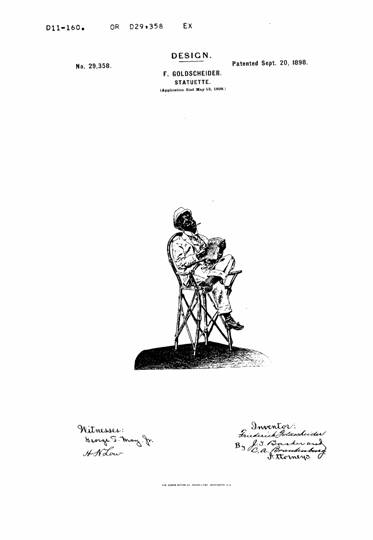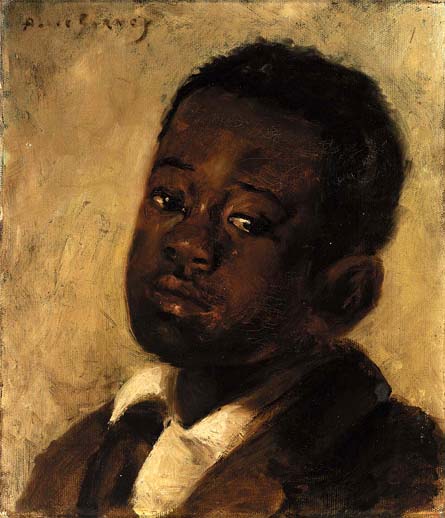46 in (117 cm) high
2nd Figure: 50 in (127 cm) high
cf. Robert E. Dechant and Filipp Goldscheider, Goldscheider: History of the Company and Catalogue of Works, Historicism, Art Nouveau, Art Deco, the 1950s, 2007, model 1236
Ora Pinhas, Goldscheider: A Catalogue of Selected Models, 2006, model 1225
The ‘Goldscheidersche Porzellan-Manufactur und Majolica-Fabrik’ (Goldscheider Porcelain Manufacturer and Majolica Factory) was founded in 1885 by Friedrich Goldscheider in Vienna. Within a short period of time, Goldscheider established itself as a leading ceramic company first in Vienna and then throughout Europe, gaining wide international acclaim and receiving notable awards. Friedrich’s sons Walter and Marcell were able to expand the business further in the 1920s and 30s, with international branches opening in Paris, Leipzig, Berlin and Florence and licences granted to major manufacturers like Myott in England.
Goldscheider set the standards and style for Art Deco ceramics with enormous success all over the world, creating beautiful and striking models which continue to be much in demand today. It took the rise of Hitler and fascism to halt the unique artistic and business achievements of the Viennese family. After the Aryanization programme of 1938, Walter Bosse, a progressive ceramic maker who learnt his trade at Goldscheider, attempted to save the firm and run it under his name. The Nazi regime however appointed its protégé Josef Schuster from Munich. His production depended mainly on well-established models with just the manufacturer’s name changed: there was little innovation. This spelled the end of a major European force in ceramics.
The Goldscheider family fled Austria and settled in England and in the US, where they continued the production of ceramics. Marcell Goldscheider manufactured under the family name in Staffordshire, UK. Walter Goldscheider built a successful US business, but eventually returned to Vienna in 1950 to revive the Austrian company. The heritage of the war and Schuster’s failures could not be overcome and three years later Walter had to close his family business. He sold the licence for the worldwide brand name Goldscheider to the German company Carstens, which produced ceramics until 1963. Finally, some 25 years later, Friedrich’s great-grandson Peter Goldscheider produced a limited number of figures and applied-art objects in Stoob, Austria, offering one last opportunity for the public to buy original Goldscheider pieces. The company’s immediate and long-lasting worldwide success was due not only to professional management and international market orientation, but most of all to the timeless beauty and quality of many of the pieces. Goldscheider items are eagerly sought after by collectors and investors all over the world.





















